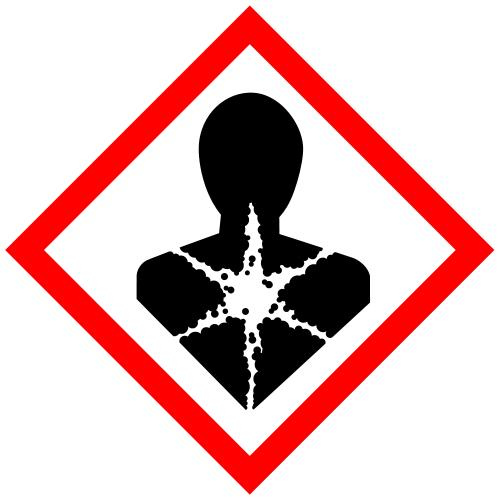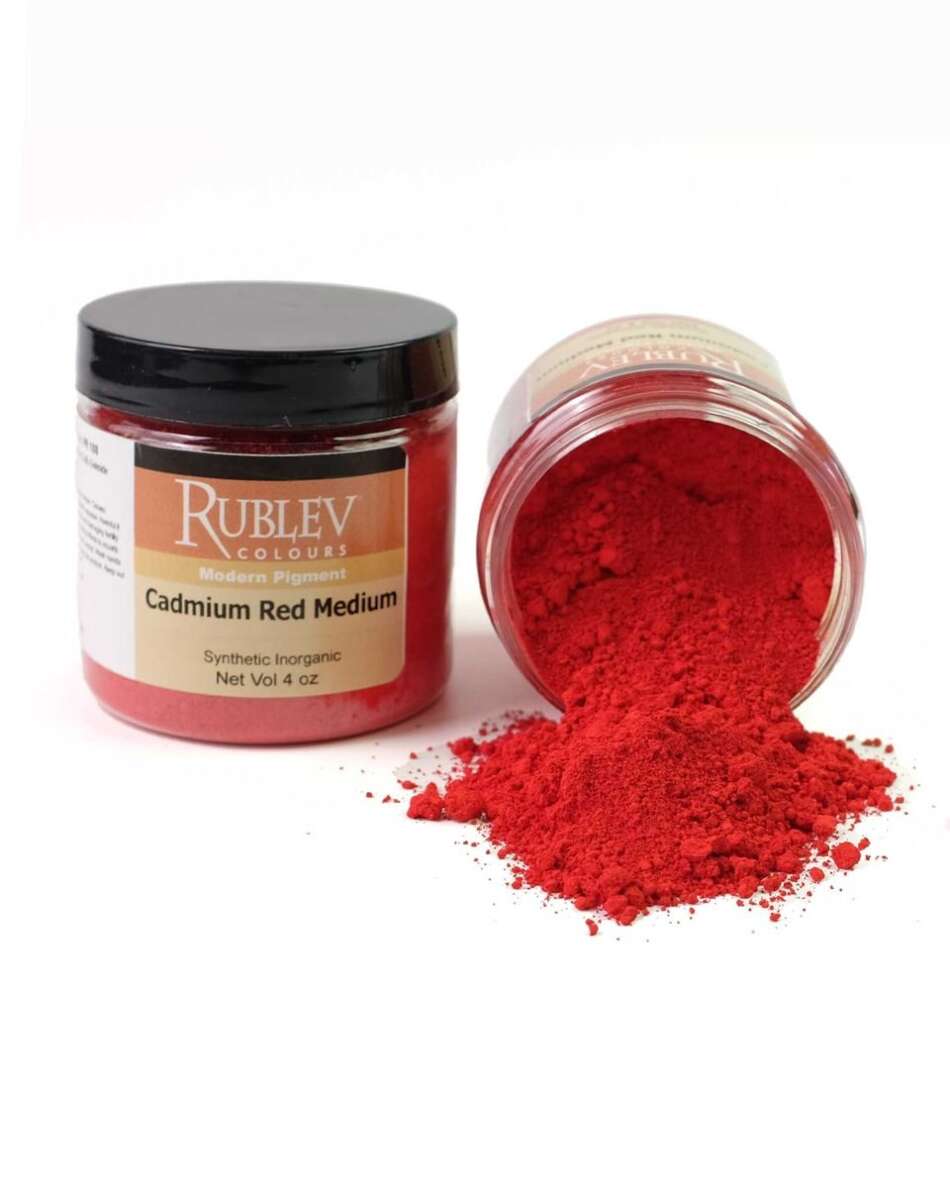Cadmium Red Medium Pigment
Cadmium Red pigment is cadmium zinc sulfoselenide (CdS, CdSe) produced by co-precipitating and calcining, at high temperature, a mixture of cadmium sulfide and selenide sulfide in varied ratios forming a partially crystalline structure.
Cadmium Red pigment is cadmium zinc sulfoselenide (CdS, CdSe) produced by co-precipitating and calcining, at high temperature, a mixture of cadmium sulfide and selenide sulfide in varied ratios forming a partially crystalline structure with sometimes hexagonal or cubic forms. Cadmium pigments are the most durable yellow, orange and red inorganic pigments commercially available. They have excellent chemical and heat stability, and can be used in chemically aggressive environments and durable applications without color fade.
Cadmium sulfoselenide pigments were developed in response to the need for stable shades of cadmium orange to red colors. Cadmium and selenide salts are co-precipitated and then heated to 300 °C.
| Pigment Names | |||||||
| Common Names (pigment): | English: cadmium red French: cadmium rouge German: Kadmiumrot Italian: cadmio rosso Russian: Кадмий красный Spanish: cadmio rojo | ||||||
| Nomenclature: |
| ||||||
| Pigment Information | |
| Color: | Red |
| Pigment Classification: | Synthetic Inorganic |
| Colour Index: | Pigment Red 108 (77202) |
| Chemical Name: | Cadmium Sulfoselenide |
| Chemical Formula: | CdS, CdSe |
| CAS No.: | 58339-34-7 |
| Series No.: | 6 |
| ASTM Lightfastness | |
| Acrylic: | I |
| Oil: | I |
| Watercolor: | I |
| Physical Properties | |
| Particle Size (mean): | 0.9 microns |
| Specific Gravity: | 5.12 |
| Bulk Density: | 0.99 g/ml |
| pH: | 6.0 |
| Refractive Index: | 2.384 |
| Oil Absorption: | 20 grams oil / 100 grams pigment |
| Heat Stability: | 400 °C |
| Health and Safety | WARNING! Contains Cadmium Compound. Classified by IARC as probably carcinogenic in humans. Avoid breathing dust, mists or spray. Do not sand. Keep out of reach of children. Conforms to ASTM D-4236. California Proposition 65: Contains a chemical known to the State of California to cause cancer by means of inhalation. |
For a detailed explanation of the terms in the table above, please visit Composition and Permanence.
Origin and History
When first introduced, there were few stable, bright pigments in the yellow to red range, with stable orange and bright red being very rare. The cadmium pigments eventually replaced compounds such as mercury sulfide (vermilion) with improved lightfastness.
Cadmum sulfide was suggested as a pigment in 1819 by Stromeyer, but it was not commercially available until 1840s due to scarcity of metal required for its production. Cadmium sulfide selenides (cadmium sulfoselenides) were originally commercialized in 1910, the manufuctuiring process involving heating cadmium sulfide, sulfur, and selenium to about 600 °C in an inert atmosphere. An improved process developed by the German company Bayer in 1919 involved precipitating the aqueous solutions of alkaline sulfides and selenides. The precipitate was yellow and the red shade developed upon heating at 300 °C.
Source
About half the consumption of cadmium, which is about 2,000 tons annually, is used to produce colored cadmium pigments. The principal pigments are a family of yellow/orange/red cadmium sulfides and sulfoselenides as well as compounds with metals other than cadmium.
Cadmum pigments are highly saturated with good permanence and tinting power. Cadmium yellow, cadmium orange and cadmium red are familiar artists’ colors, as well as being frequently employed as architectural paints, since they can add long life and vibrancy to coatings. Their greatest use is in the coloring of plastics and specialty paints which must resist high processing or service temperatures.
The following are commonly used cadmium pigments in artists' paints:
Light shades of cadmium yellow is cadmium zinc sulfide, typically a greenish yellow, solid solution of CdS and ZnS. Colour Index Pigment Yellow 35 (PY35).
Deep shades of cadmium yellow is cadmium sulfide (CdS). Colour Index Pigment Yellow 37 (PY37).
Cadmium orange is cadmium sulfoselenide, a solid solution of CdS and CdSe. Depending on the sulfur to selenide ratio, Colour Index Pigment Orange 20 (PO20) or Colour Index Pigment Red 108 (PR108) is obtained.
Cadmium red is cadmium sulfoselenide. Colour Index Pigment Red 108 (PR108).
Cadmium green is sometimes a mixture of cadmium yellow and viridian to give a bright, pale green mixture.
Uses
Most cadmium pigments are used in plastics. These pigments disperse well in most polymers to give high opacity and tinting strength. The pigments are insoluble in organic solvents, have good resistance to alkalis and in most cases will remain lightfast for the life of the plastic. As a result, cadmium pigments have been used in a wide range of plastic products. Nowadays, their greatest application is in complex polymers which are processed at higher temperatures and require the unique durability and technical performance of a cadmium pigment. Their use is almost mandatory in many nylon, acrylonitrile butadiene styrene (ABS), polycarbonates, high density polyethylene, silicone resins and other modern thermoplastic polymers processed at high temperatures which preclude the use of organic pigments and also most alternative inorganic pigments in the range of hues provided by cadmium. Cadmium pigmented engineering polymers such as ABS are widely used in products which include telephones, gas pipes and fittings, electricity cables, beverage crates and motor vehicle radiator fans.
Bright cadmium yellows, oranges and reds are major pigments for artists' colors where their permanence and opacity are the accepted standards against which other pigments are judged. Cadmium yellows and reds can have service temperatures well above 300 °C and are used in coatings for process chemical and steam pipes. They can also be incorporated in latex and acrylic coatings.
Permanence and Compatibility
The lightfastness or permanence of cadmium requires protection from a tendency to slowly form carbonate salts with exposure to air. Most paint vehicles accomplish this, but cadmium colors will fade in fresco or mural painting.
Oil Absorption and Grinding
Cadmium red (cadmium sulfoselenide) absorbs a moderate amount of oil; about 20 grams of linseed oil per 100 grams of pigment to make a paste.
Toxicity
Cadmium sulfoselenide is not very toxic (LD50 > 5000 mg/kg) when used as a pigment. Cadmium pigments are extremely insoluble compounds of calcined cadmium zinc sulphide and cadmium sulfoselenide. Cadmium pigments are universally compatible and are recommended for high performance applications where thermal stability, chemical stability and weatherfastness are critical parameters. The level of cadmium solubility is tightly controlled to ensure compliance with: Council of Europe Resolution AP (89) 1 Food Contact Limits; USA TCLP Waste Leaching Limits; Safety of Toys Directive 88/378/EEC (EN71: Part 3 relates to finished toy compliance). Cadmium pigments are registered as non-hazardous substances under REACH in 2013 and are regulated under Annex XVII of the REACH legislation (1907/2006).
For more information on how to handle pigments safely, please visit How to Safely Handle Art Materials and Pigments.
| SKU | 450-23 |
|---|---|
| Brand | Rublev Colours |
| Vendor | Natural Pigments |
| Processing Time | Usually ships the next business day. |
| Color | Red |
| Pigment Type | Inorganic, Synthetic |
Hazard Pictograms
 |  |
| GHS07: Exclamation Mark | GHS08-2: Health Hazard |
Signal Word: Danger
Hazard Designation
H302 Harmful if swallowed.
H332 Harmful if inhaled.
H360 May damage fertility or the unborn child.
H373 May cause damage to organs through prolonged or repeated exposure.
Safety Designation
P260 Do not breathe dust/fume/gas/mist/vapors/spray.
P261 Avoid breathing dust/ fume/ gas/ mist/ vapors/ spray.
P280 Wear protective gloves/ clothing/ eye/ face protection.
P281 Use personal protective equipment as required.
P405 Store locked up.
P501 Dispose of contents/ container according to regional, national and international regulations.
![]() WARNING: This product can expose you to chemicals including cadmium compounds, which is known to the State of California to cause birth defects or other reproductive harm. For more information go to www.P65Warnings.ca.gov.
WARNING: This product can expose you to chemicals including cadmium compounds, which is known to the State of California to cause birth defects or other reproductive harm. For more information go to www.P65Warnings.ca.gov.



